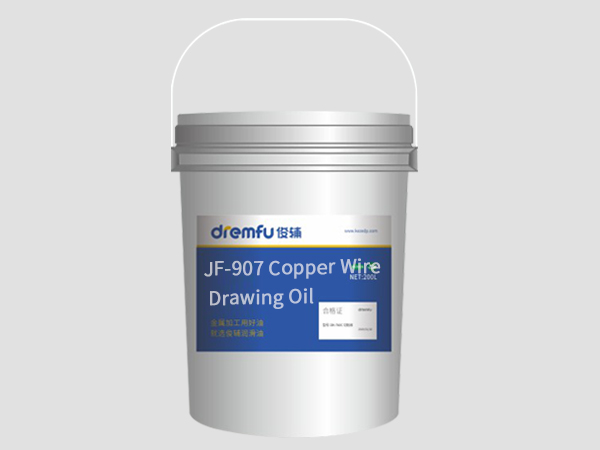

Stainless Steel Drawing Oil (SSDO) is a specialized lubricant formulated to meet the stringent demands of stainless steel wire, tube, and sheet metal drawing processes. By forming a high-strength lubricating film between the metal and the die, it reduces friction, dissipates heat, and prevents surface defects such as scratches, cracks, and discoloration. This article explores its technical characteristics, application scenarios, and maintenance protocols based on industry-leading products and empirical data.
Extreme Pressure (EP) Lubrication
SSDO contains sulfurized fatty acid esters and chlorinated paraffins, which react with the metal surface under high pressure (up to 3000 MPa) to form a chemically stable lubricating film. For example, Divyol FN42 achieves a maximum seizure-free load (Pb) of 1600 N and a sintering load (Pd) of 7000 N (ASTM D2783), ensuring reliable performance even during deep drawing of 304/316 stainless steel tubes with wall thickness reductions exceeding 50%. Its kinematic viscosity at 40°C ranges from 36 to 40 cSt (ASTM D445), providing optimal flow characteristics for both high-speed (≥15 m/s) and low-speed (≤0.5 m/s) operations.
Thermal Stability and Oxidation Resistance
Premium SSDO formulations, such as HDM-1600, exhibit a flash point of ≥280°C (ASTM D92) and a pour point of ≤-2°C (ASTM D97), enabling stable operation in temperatures ranging from -20°C to 250°C. Oxidation stability tests show a total acid number (TAN) increase of ≤0.3 mg KOH/g after 500 hours of continuous use at 120°C, minimizing sludge formation and extending oil life by 3–5 times compared to conventional lubricants.
Corrosion Protection
SSDO incorporates neutral rust inhibitors like triazoles and carboxylates, achieving a copper strip corrosion rating of 1b (ASTM D130) after 3 hours at 100°C. For marine-grade stainless steel (e.g., 316L), formulations like K-LS805 provide a salt spray resistance of ≥500 hours (ASTM B117), preventing white rust and pitting during storage and transportation.
Surface Finish and Cleanability
Low-residue SSDO variants, such as Matrix FDX 3012, are engineered for easy filtration (pore size ≤5 μm) and post-drawing cleaning. After annealing at 800°C, wire surfaces exhibit a residual carbon content of ≤0.02%, meeting the stringent requirements for stainless steel springs used in medical devices. Its polar compounds ensure uniform coverage, reducing surface roughness (Ra) from 0.8 μm to ≤0.2 μm (ISO 4287).
Adhesion and Wettability
Advanced SSDO formulations leverage high-viscosity base oils (e.g., HDM-6000 with a viscosity of 6000 cSt at 40°C) to enhance adhesion to vertical dies and curved surfaces. This prevents lubricant slippage during high-angle drawing (≥15°), ensuring consistent film thickness and reducing die wear by 40–60% compared to low-viscosity oils.
Stainless Steel Wire Drawing
SSDO is critical for manufacturing fine wires (diameters ≤0.1 mm) used in automotive safety belts and medical sutures. For example, Divyol FN204 supports drawing speeds of 20 m/s for 304 stainless steel wire, achieving a surface defect rate of ≤0.5 PPM (parts per million) through its high-sulfur content (≥5% w/w), which forms a durable sulfide film at the die-wire interface.
Tube and Pipe Drawing
In the production of stainless steel tubes for heat exchangers and boilers, SSDO like HDM-1600 provides a cooling efficiency of 0.8 W/m·K—twice that of water-based emulsions—preventing thermal-induced grain growth and ensuring a yield strength of ≥520 MPa (ASTM E8) in the final product.
Deep Drawing of Complex Shapes
For automotive components such as stainless steel exhaust manifolds, SSDO formulations with high EP properties (e.g., K-LS805) enable a single-stage drawing ratio of ≥2.5:1 without cracking, reducing production cycles by 30–40% compared to multi-stage processes.
High-Nickel Alloy Processing
SSDO is also used for drawing nickel-based alloys (e.g., Inconel 625) used in aerospace turbines. Its chlorine-free formulations (e.g., Matrix FDX 3012) prevent stress corrosion cracking (SCC) during high-temperature service (≥600°C), extending component lifespan by 2–3 times.
Concentration and Viscosity Control
For water-miscible SSDO, maintain a concentration of 5–10% v/v in the circulating system. Use viscometers to monitor kinematic viscosity at 40°C, adjusting with deionized water or base oil to keep it within ±10% of the target value (e.g., 40 cSt for Divyol FN42).
Filtration and Particle Management
Install multi-stage filters (20 μm pre-filter + 5 μm main filter) to remove stainless steel fines and die debris. For oil-based SSDO, replace filters every 150 operating hours or when pressure drop exceeds 0.3 bar.
Temperature Regulation
Keep the lubricant tank temperature between 40–60°C to optimize EP additive performance. For water-miscible SSDO, avoid temperatures below 25°C to prevent emulsion separation.
Oxidation and Corrosion Monitoring
Perform monthly tests for TAN and Fourier-transform infrared spectroscopy (FTIR) to detect oxidative degradation. Replace SSDO when TAN exceeds 1.5 mg KOH/g or the carbonyl index rises by ≥25%. For corrosion protection, conduct salt spray tests (ASTM B117) every quarter to verify inhibitor effectiveness.
Die Cleaning and Storage
After drawing, clean dies with ultrasonic solvents (e.g., isopropyl alcohol) to remove SSDO residues. Store dies in a humidity-controlled cabinet (≤30% RH) to prevent corrosion, and coat them with a thin layer of SSDO before reuse to enhance initial lubrication.
Stainless Steel Drawing Oil is a high-performance lubricant essential for achieving precision, efficiency, and quality in stainless steel and high-nickel alloy manufacturing. By leveraging advanced EP additives and tailored formulations, it addresses the unique challenges of stainless steel’s high work-hardening rate (n-value ≤0.3) and low thermal conductivity (15 W/m·K). Proper selection and maintenance of SSDO can reduce production costs by 20–30% while extending equipment lifespan by 4–6 years, making it indispensable in industries ranging from automotive to aerospace.